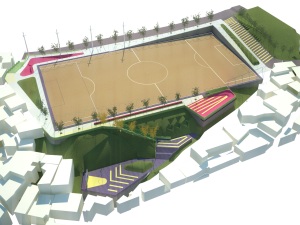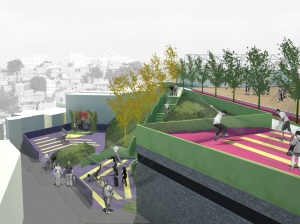Daejeon Biennial – 'Mineira' Achitecture in South Korea
Projects presented at the 20th Daejeon Biennial, South Korea
Urban OPERATIONS IN squatters “FAVELAS” - VILA VIVA
Brazil has an enormous challenge in the housing deficit because 80% of its 185 million inhab live in the cities, thirty million live in extreme poor and precarious conditions. In Belo Horizonte 600 thousand people, 25% of its population, live apart from the city in 142 “favelas”. To face this problem is necessary to guarantee the right to the city and access to public urban services, to create the conditions for worthwhile life and to reverse the misery conditions.
Since 2000 the city government of Belo Horizonte has been promoting an urbanization process in some of these “favelas” which is called “Vila Viva”. The program consists on works of urbanization, sanitation, removal of families from high-risk areas of landslips and flooding, restructuring of the road system, implementation of parks and public facilities (health centers, community centers, schools, etc.), furthermore education activities and creation of alternatives to generate work and income.
The works of removing families from high-risk areas and the implementation of streets cause the removal of several homes. The displaced families receives compensation or are re-installed in new social housing structures. Thus arise several remaining spaces conformal within the limits of roads and houses that remain. In this context, the Horizontes´s role is the re-design of these areas, transforming them into high quality spaces for public usage.
Previous experiences show that suburban areas designed for resting and contemplation end up being dominated by drug dealers. The solution to avoid it is creating public spaces suitable for recreation activities and sports, and adoption of the concept of 'defensible spaces', where the total visibility contributes to the sense of security. These actions contribute to the appropriation of spaces by the community which is essential for its preservation because, otherwise, the space would be occupied by illegal housing.
As a project strategy the team developed a set of adjustable solutions that can be applied in different situations. The floors are designed with a big variety of pavements, permeable and semi-permeable so as to increase the natural absorption of water, essential in a city affected by serious flooding problems. Permeable Areas use native vegetation and tall trees in order to create shade and contribute to improve micro-climate and urban ambiance.
The street furniture take into account non-conventional uses. Details are in materials of high resistance and the lowest number of items to prevent vandalism. Concrete porches covered by plants are used as a goal for soccer and basketball hoop. Retaining walls serve as climbing walls and support for graffiti art and expressions of 'hip-hop' culture.
The topography is shaped to conform and organize these places by means of flat and steep surfaces, creating courtyards and slopes that can serve as benches, bleachers, skateboard ramps, slides for children, arenas for “capoeira” performances, theaters, etc..
The challenge we face is promoting a positive impact on violent realities of the “favelas”. It is expected that each square meter reversed in vegetated public area can make a difference in the problems of urban flooding. And it is especially expected, that these places can help in the lives of still invisible children behind the walls preventing them to take the no-return way of life in the streets. The strategy action developed by Horizontes and its partners helped to elevate the current discourse on public works, by challenging traditional ways of building, using a rigorous approach albeit experimental design although.
__________________________________________________________
Place: Vila Conceição, Aglomerado da Serra | Belo Horizonte, Minas Gerais, Brazil | Team :
Horizontes Arquitetura and Matheus Melo/
Cooperator
: Nina da Silva |
Hirer
:
Consortium of Camargo Corrêa and Santa Barbara Construction
Contract Manager
: Ana Cristina S. A. Alvarenga |
Costumer:
Urbel (
Urbanization Company of Belo Horizonte)
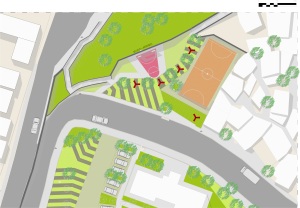
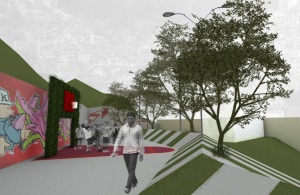
Place: Pedreira Prado Lopes | Belo Horizonte, Minas Gerais, Brazil | Team:
Horizontes Arquitetura and Fernando Lara |
Cooperator
: Raoni Sena Ferraz |
Hirer:
Mello Azevedo Construction |
Contract Manager
: Cláudio Menim de Oliveira Santos |
Costumer
: Urbel (
Urbanization Company of Belo Horizonte
)

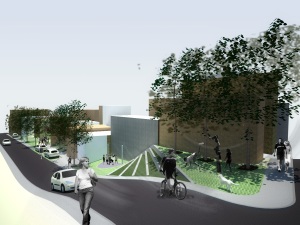
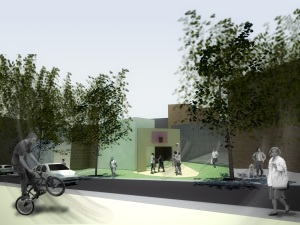
Place: Campo do Cascalho | Belo Horizonte, Minas Gerais, Brazil | Team
: Horizontes Arquitetura and Matheus Melo |
Cooperators
: Mateus Castilho and Fábio Oliveira |
Hirer
: HAP engenharia |
Contract Manager
: Rosely Caldeira |
Costumer:
Urbel (
Urbanization Company of Belo Horizonte)
